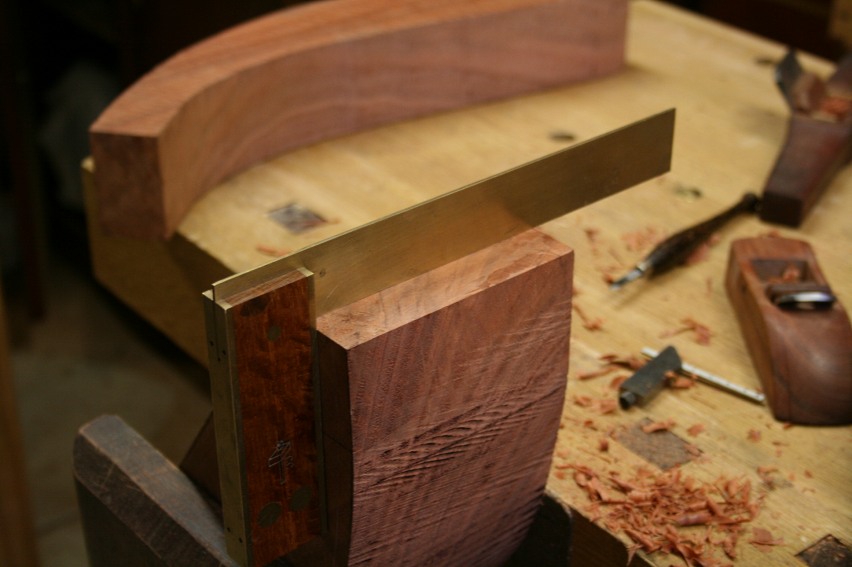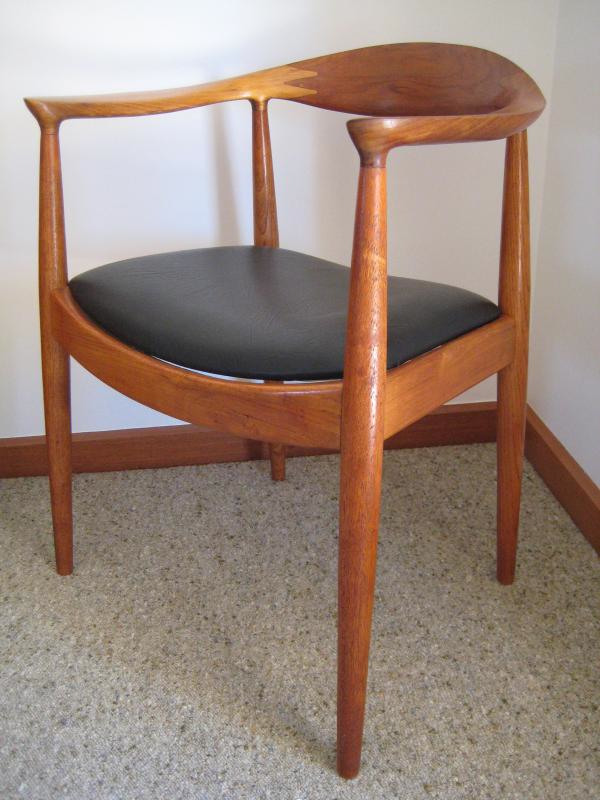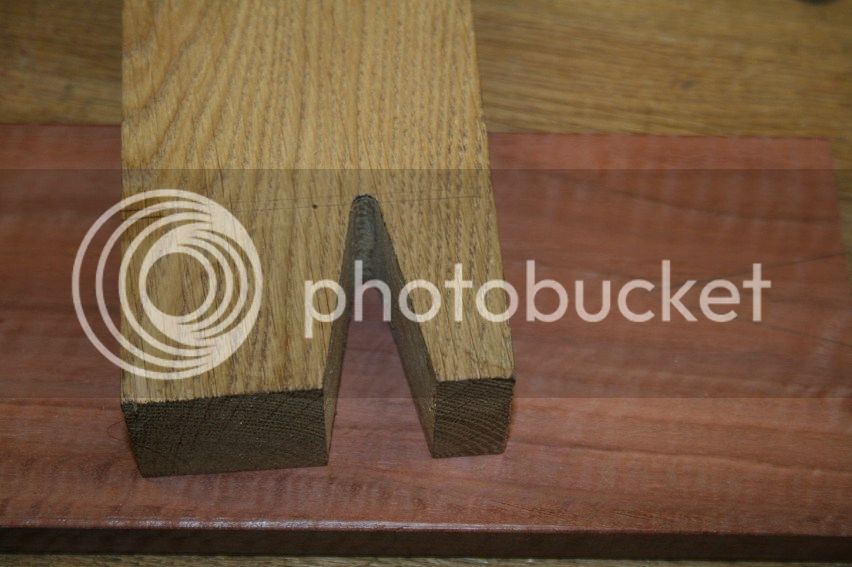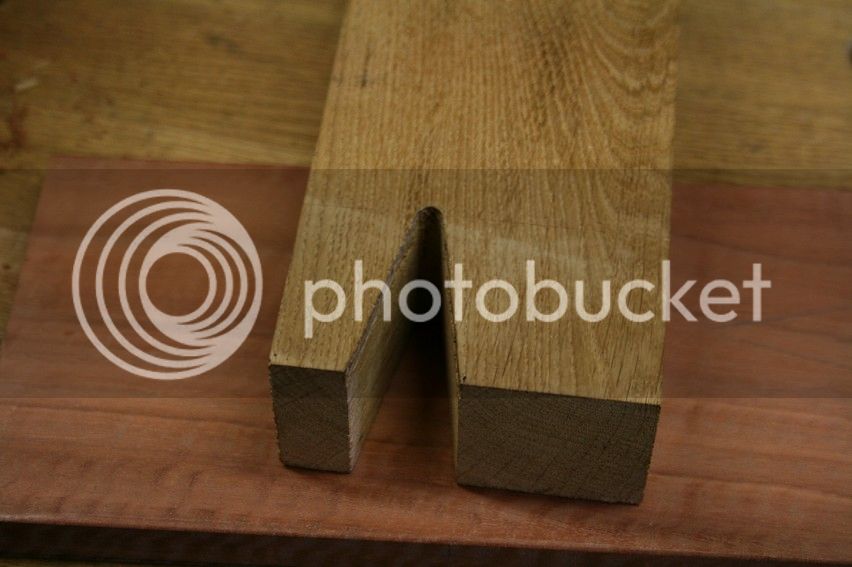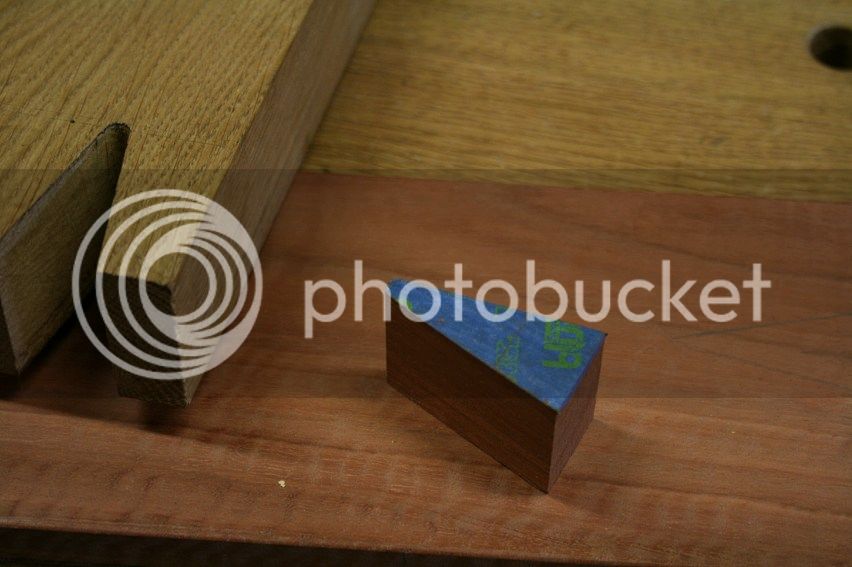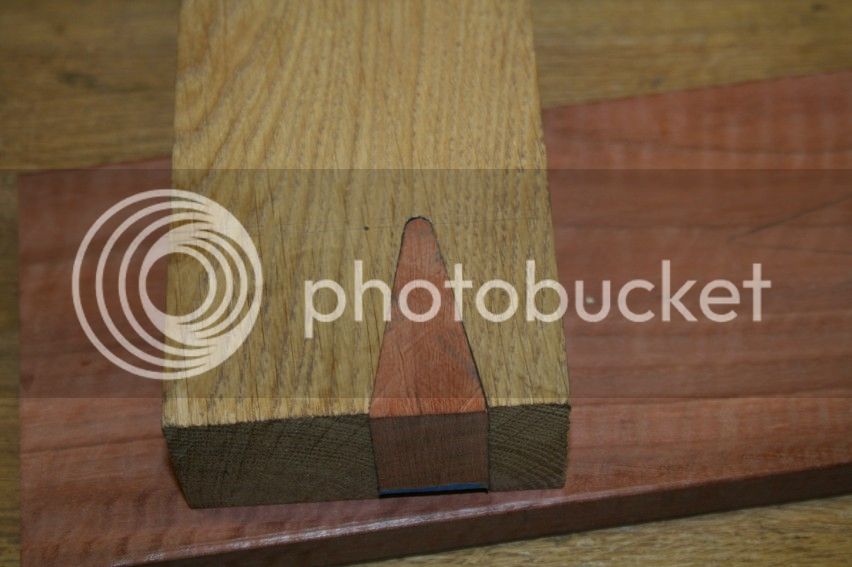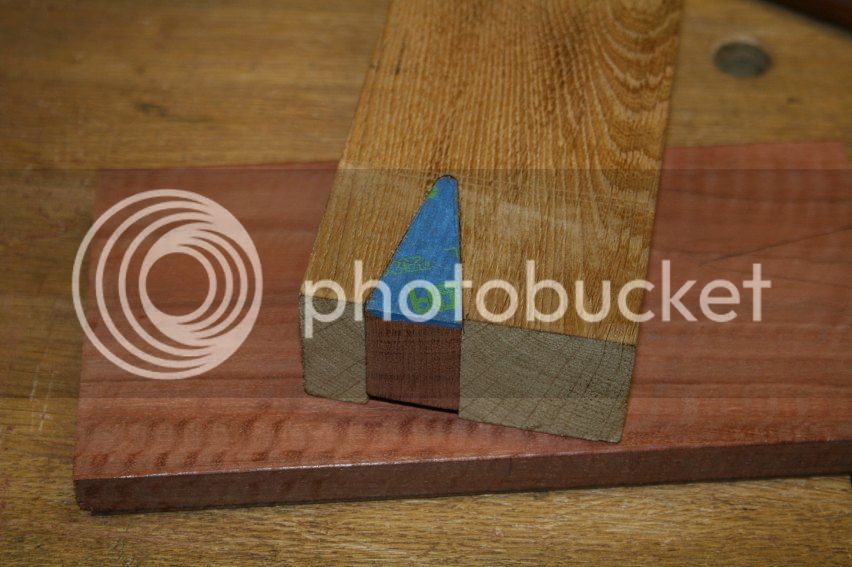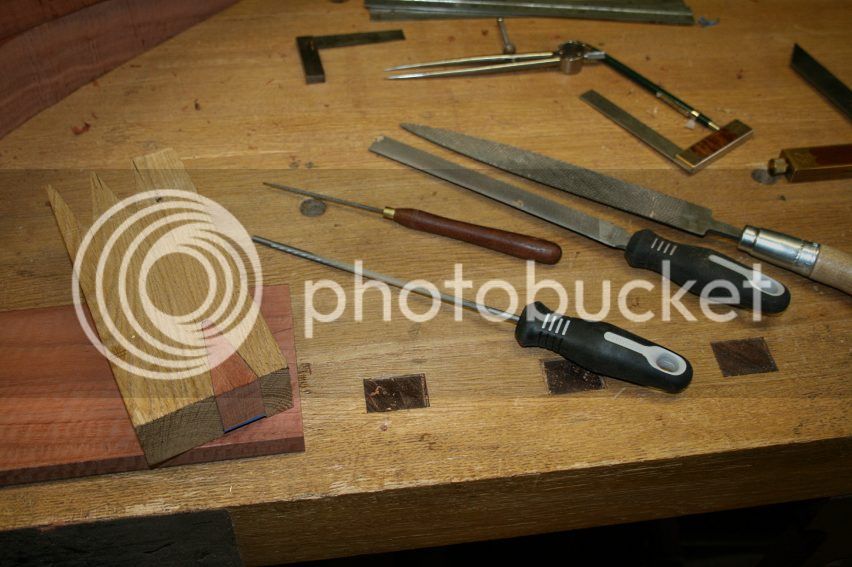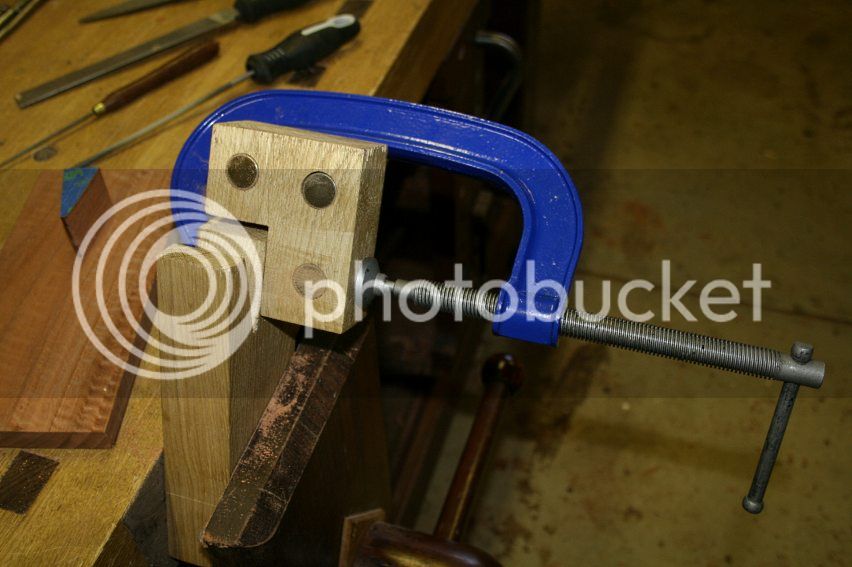Derek Cohen (Perth Oz)
Established Member
Hi Custard
Your suggestions for clamping up are very helpful. Before any glue is applied, I shall find a way to ensure clamping along the length of the joint as well as across the joint.
Your analogy of sawing a difficult dovetail is spot on. I would go so far to say that this is the most difficult dovetail I have faced to date. Bar none! The problem child is that bloody round end. I have created a jig that hand drills exactly where I want and does so accurately through a 50 mm thickness - this thickness is what makes accuracy (or not!) so evident.
Now the issue is whether I drill first and saw to the circumference of the hole, or saw first and then drill to the centre of the sawn lines?
I have begun practicing both ways. The first requires great accuracy, otherwise you are left with a step at the end - hence consideration given to adding the hole later. But the latter also has a problem in that there is guesswork now where to locate the hole. The added complication is that all this is difficult enough on the face side of the joint, but must also be as accurate on the back side as well!
I doubt that there is an early version with a pointed finger joint. As far as I can ascertain, the finger joint was added by the factory to strengthen the connection of arm and backrest after the design moved to #503 (the solid seat) to compliment the original #501 (the woven seat and back). I guess my one fallback is that I can add a woven back if I totally screw up this joint!
I shall do some more practice today. Yesterday I built a jig for drilling and a guide for sawing. My initial failures had me cursing in a few languages, some of which I invented. I was convinced this joint was impossible. I have not yet managed a perfect one, but I am getting a little closer, enough to see that it is possible with perfectly parallel pieces. Are mine parallel enough? There is a long way to go before I do this for real.
Regards from Perth
Derek
Your suggestions for clamping up are very helpful. Before any glue is applied, I shall find a way to ensure clamping along the length of the joint as well as across the joint.
Your analogy of sawing a difficult dovetail is spot on. I would go so far to say that this is the most difficult dovetail I have faced to date. Bar none! The problem child is that bloody round end. I have created a jig that hand drills exactly where I want and does so accurately through a 50 mm thickness - this thickness is what makes accuracy (or not!) so evident.
Now the issue is whether I drill first and saw to the circumference of the hole, or saw first and then drill to the centre of the sawn lines?
I have begun practicing both ways. The first requires great accuracy, otherwise you are left with a step at the end - hence consideration given to adding the hole later. But the latter also has a problem in that there is guesswork now where to locate the hole. The added complication is that all this is difficult enough on the face side of the joint, but must also be as accurate on the back side as well!
I doubt that there is an early version with a pointed finger joint. As far as I can ascertain, the finger joint was added by the factory to strengthen the connection of arm and backrest after the design moved to #503 (the solid seat) to compliment the original #501 (the woven seat and back). I guess my one fallback is that I can add a woven back if I totally screw up this joint!
I shall do some more practice today. Yesterday I built a jig for drilling and a guide for sawing. My initial failures had me cursing in a few languages, some of which I invented. I was convinced this joint was impossible. I have not yet managed a perfect one, but I am getting a little closer, enough to see that it is possible with perfectly parallel pieces. Are mine parallel enough? There is a long way to go before I do this for real.
Regards from Perth
Derek

































